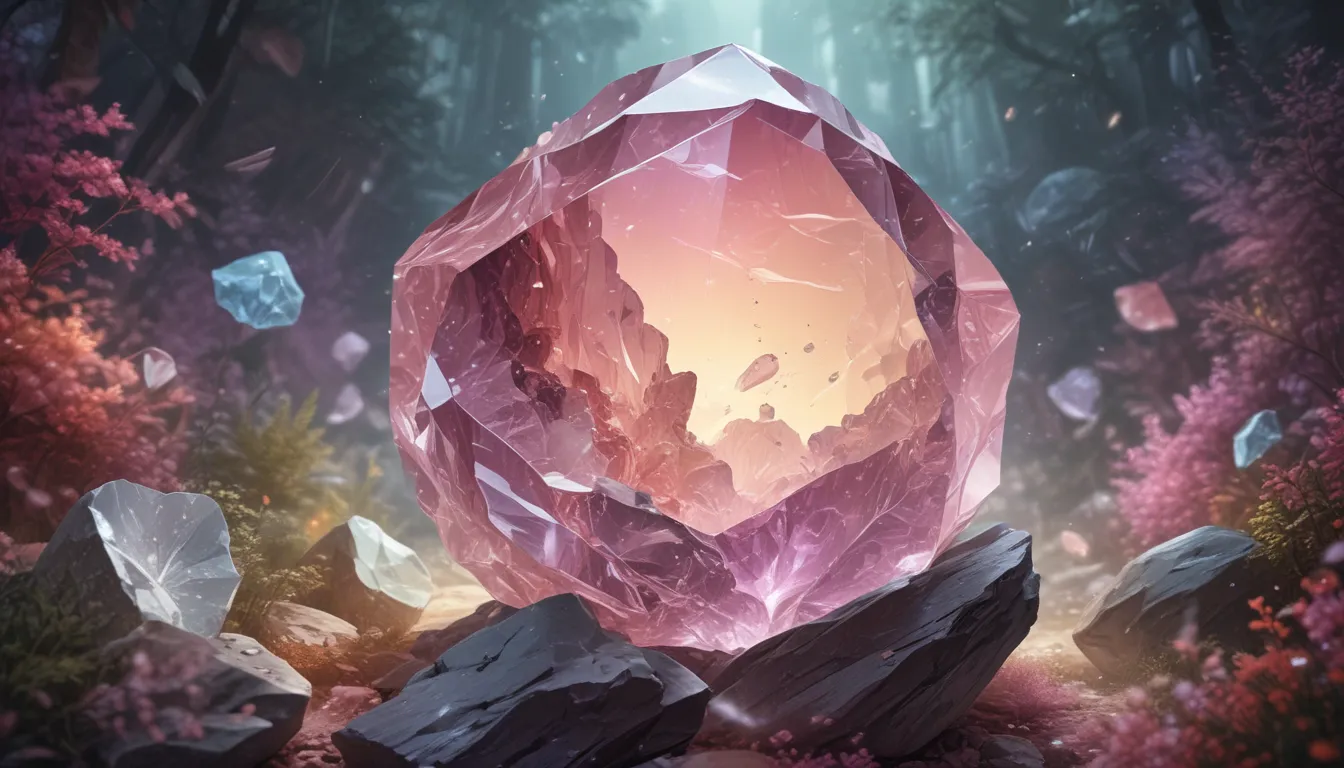The pictures we use in our articles might not show exactly what the words say. We choose these pictures to make you interested in reading more. The pictures work together with the words but don’t take their place. The words still tell you the important facts.
Quartz, a captivating mineral with stunning beauty and remarkable properties, has intrigued humans for centuries. Let's embark on a journey to uncover the enigmatic world of quartz, exploring its geological origins, unique characteristics, and cultural significance. From its abundance to its mesmerizing optical properties and diverse varieties, quartz reveals itself as a true marvel of nature.
Abundant and Ubiquitous
Quartz is among the most abundant minerals on Earth, comprising a significant portion of the Earth’s crust and found in various geological formations worldwide. Its widespread distribution ensures its presence in many regions, showcasing the diversity and richness of quartz in the natural world.
The Crystal Kingdom
Belonging to the crystal kingdom, quartz exhibits a hexagonal crystal structure, with crystals ranging in size from microscopic to several meters long. Its six-sided prismatic shapes with pointed terminations reflect the vastness and beauty of quartz formations.
Quartz Varieties
Quartz encompasses a diverse family of varieties, each displaying unique characteristics and colors. From amethyst and citrine to rose quartz and smoky quartz, these variations arise from different impurities and growth conditions during formation, adding to the allure of quartz in its many forms.
Hard as Stone
Renowned for its exceptional hardness, quartz ranks at 7 out of 10 on the Mohs scale of mineral hardness, making it durable and resilient. Its resistance to scratches and wear contributes to its longevity and popularity in various applications, highlighting its strength and durability.
Geological Timekeeper
Quartz crystals offer valuable insights into Earth’s history through inclusion lines or growth lines that form during their growth process. Scientists can study these lines to learn about the geological events and conditions that shaped the crystal, unveiling the hidden stories of Earth’s past.
Unique Optical Properties
Quartz’s unique optical properties, including birefringence, create vibrant displays of color and light when viewed under polarized light. This mesmerizing feature enhances the beauty and allure of quartz, adding to its mystique and charm.
Vibrational Resonance
Famous for its piezoelectric properties, quartz can generate an electric charge when subjected to mechanical pressure or vibration. This property finds applications in electronic devices and quartz watches, showcasing the precise oscillation of quartz for timekeeping and technological advancements.
Healing and Metaphysical Properties
Quartz has been associated with healing and metaphysical properties across various cultures, believed to amplify intentions, promote clarity, and enhance spiritual growth. Used in meditation, energy healing practices, and crystal therapy, quartz crystals embody positive energy and spiritual connections.
Quartz in Technology
Quartz’s remarkable electrical and thermal properties play a vital role in modern technology, utilized in electronic components such as oscillators, filters, and frequency control devices. Its contribution to advancements in technology underscores the versatility and importance of quartz in various applications.
Quartz in Optics
Thanks to its transparency to ultraviolet light and resistance to high temperatures, quartz is essential in optics. Quartz lenses, prisms, and specialized lenses for cameras and telescopes rely on its unique properties, highlighting its critical role in optical instruments and scientific equipment.
Quartz in Construction
Quartz’s durability and aesthetic appeal make it a popular choice in the construction industry, with quartz countertops, flooring tiles, and decorative elements prized for their beauty and resilience. Its resistance to staining, scratching, and ease of maintenance showcase quartz as a versatile and practical material in construction projects.
Quartz Sand: Essential Ingredient
Quartz sand, or silica sand, serves as a vital material in industries such as glass manufacturing, foundries, ceramics, and abrasives. Its high silica content and key role in producing silicon for semiconductors and solar cells highlight the significance of quartz sand in various applications and industries.
Quartz and Ancient Cultures
Significant in ancient civilizations, quartz held cultural and spiritual importance in religious rituals, jewelry, and artistic creations. Associated with protective and healing properties, quartz was revered for its connection to divine energy and enlightenment, shaping its cultural significance throughout history.
Quartz Geodes: Nature’s Hidden Gems
Quartz geodes, geological wonders containing hollow cavities lined with beautiful crystals, offer a breathtaking display of nature’s artistry. Formed when dissolved minerals crystallize in rock cavities, these natural treasures captivate collectors and nature enthusiasts, showcasing the intricate beauty of quartz formations.
Quartz and Quartzite: Understanding the Difference
While both quartz and quartzite are valuable materials, quartz is a mineral, and quartzite is a metamorphic rock formed under intense heat and pressure. With distinct properties and unique patterns, quartzite stands out as a sought-after natural stone for countertops, tiles, and architectural features, highlighting its durability and beauty.
Quartz’s Colorful World
Presenting a vibrant array of colors, quartz ranges from clear and white to vibrant hues of purple, yellow, pink, and brown. These colors, whether natural or enhanced through treatments, expand the aesthetic appeal and versatility of quartz, making it a popular choice for various applications.
Quartz and Earth’s Magnetic Field
Certain quartz varieties, such as lodestone and ferruginous quartz, exhibit magnetic properties, aligning with Earth’s magnetic field when suspended. Serving as natural compasses, these quartz crystals showcase the intricate relationships between minerals and natural forces, highlighting the wonders of nature’s design.
Quartz’s Role in Gemology
Quartz gemstones, including amethyst and citrine, are valued for their beauty and versatility in jewelry. Evaluated based on color, clarity, cut, and carat weight, these gemstones offer an affordable alternative to more expensive stones while providing a wide range of colors and designs for jewelry enthusiasts.
Quartz’s Environmental Significance
Playing a crucial role in Earth’s natural cycles, quartz acts as a filter and purifier in groundwater systems due to its presence in sand. Quartz-rich sand dunes and beaches support unique flora and fauna, serving as natural barriers against coastal erosion and contributing to diverse ecosystems.
Quartz and Its Geological Wonders
Quartz formations create geological wonders such as geysers and hot springs, where hot water passes through quartz-rich rocks, dissolving minerals and forming colorful terraces and thermal features. These natural phenomena showcase the beauty and complexity of quartz in shaping Earth’s geological wonders.
Conclusion
As we conclude our exploration of quartz and its captivating attributes, we invite you to appreciate the beauty and resilience of this extraordinary mineral. From its abundance in nature to its diverse applications and cultural significance, quartz stands as a testament to the wonders of our planet. Let us cherish the enduring legacy of quartz, a true masterpiece crafted by the Earth itself.
Exploring Together
Our dedication to providing engaging and accurate content stems from the insightful contributions of users like you. Each fact on our site undergoes meticulous review by our dedicated editors, ensuring credibility and authenticity in the information we share. Dive into a world of fascinating facts with us, knowing that every detail is crafted to inspire and enlighten, fostering a community driven by a passion for learning and discovery.






